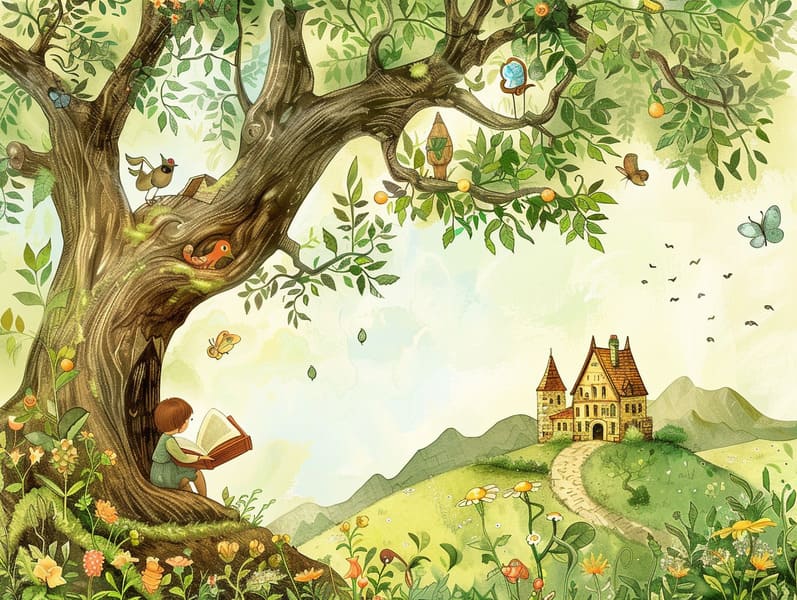The Rise of Traditional Fairy Tales with Its Undying Radiance.
The Rise of Traditional Fairy Tales with Its Undying Radiance.
Blog Article

Famous fairy tales have historical significance. These stories have been told from one generation to the next far before they were ever published. They arose from a variety of societies, including Western traditions. They were initially passed along among grown-ups, often carrying themes and messages aligned with the societal norms and beliefs of the time.
The Grimm brothers, Jacob and Wilhelm (the Grimm brothers), were among the first to gather and publish many of these beloved fairy tales. Their anthology, "Grimm's Fairy Stories," included tales like "The Story of Cinderella," "Hansel and Gretel," and "Snow White," which have since become pillars in the world of traditional fairy tales. Similarly, the Danish author's enchanting stories, such as "The Mermaid's Tale," and "The Story of the Ugly Duckling," have gained the love worldwide, cementing their place in the pantheon of iconic fairy tales.
Despite their historical roots, classic fairy tales remain as important as ever, especially as kids' bedtime tales. These magical stories are now available in multiple formats, including vividly illustrated books, delightful animations, and internet fairy tales.
Their unwavering allure can be connected to several charming aspects:
Valuable Lessons: Classic fairy tales often share important moral lessons. Tales like "The Wolf and the Liar" teach the importance of sincerity, while "The Hare and the Tortoise" show the traits of tenacity and humbleness. These narratives offer young ones clear distinctions between right and wrong, building their moral compass in a soft yet impactful way.
Sympathy and Perception: Ancient fairy tales frequently depict figures facing challenges and problems, motivating readers to sympathize with their struggles and root for their triumphs. For instance, "Beauty and Her Beast" highlights the importance of seeing beyond the surface to comprehend the true being of a character, building awareness and recognition.
Cultural Recognition: Many ancient fairy tales are rich in the cultural contexts from which they grew. Reading these tales can provide illuminating insights into different societies, promoting a sense of cultural insight and recognition.
Fantasy and Innovation: The whimsical elements in traditional fairy tales—supernatural elements—foster children’s fantasy worlds. These fairy tales move readers to fantasy realms, boosting fantasy ideas and a sense of curiosity that remains a lifetime.
Ancient fairy tales are not only spellbinding but also edifying. They function as magical tools in fostering various mental and emotional abilities in young readers. When traditional fairy tales are voiced, they develop speech development by introducing new word meanings and sophisticated sentence structures. This practice also enhances auditory skills and focus, as the young track the narrative, enthusiastic to see what happens next.
Furthermore, exploring the themes and characters of traditional fairy tales can cultivate thought processes and intellectual skills. Children are guided to detect patterns, foresee events, and grasp cause and effect. These debates also support children voice their thoughts and feelings, strengthening their emotional intelligence.
In today’s high-tech era, the existence of internet fairy tales has made these stories more within reach than ever. Internet sites and applications share broad selections of Grimm's fairy tales that can be seen or listened through anytime, anywhere. Fairy tales get more info told out loud are particularly common, making available an engaging way for children to engage with these mesmerizing stories. Sound books and read-out-loud stories guide characters and settings to life, often enhanced by charming sound effects and musical scores that amplify the story journey.
The timeless fascination of ancient fairy tales lies in their ability to shift to modern society while keeping their underlying messages. Contemporary modernizations of these narratives often integrate more representative characters and modern settings, making them understandable to today’s audience. However, the underlying themes of gallantry, humanity, and even-handedness remain unchanged, continuing to affect children of all ages.
Classic fairy tales also offer a sense of contentment and predictability. They introduce a structured narrative with a plain beginning, middle, and end, often concluding with the conclusion of conflicts and the triumph of good over bad. This dependability can be heartening for children, distributing a sense of solidity in an variable world.
Ancient fairy tales continue to fascinate and enlighten new generations, maintaining their wonder and meaningfulness in modern society. As nighttime stories for kids, they allow a perfect blend of magic and knowledge, boosting moral values, empathy, and creativity. The existence of internet fairy tales and the commonness of fairy tales spoken confirm that these old narratives remain attainable to new generations.
By keeping and conveying these fairy tales, we continue to exalt the rich tapestry of cultural heritage and cultural heritage. Whether you are accessing a artistically illustrated book, experiencing a digital collection, or listening on an sound book, the radiance of Grimm's fairy tales is always within reach. These tales emphasize of the eternal presence of storytelling and its ability to join us across eras and regions.
Even if you are enjoying a colorful picture book, experiencing a virtual library, or playing an narrated book, the attraction of children's fairy tales is always within reach.
These narratives highlight of the unfading impact of narratives and its ability to bind us across generations and cultures, making a tie that fascinates and enlightens alike.